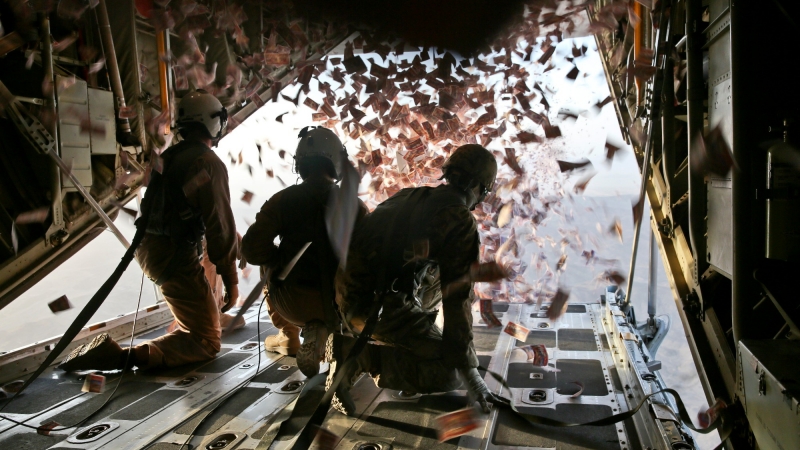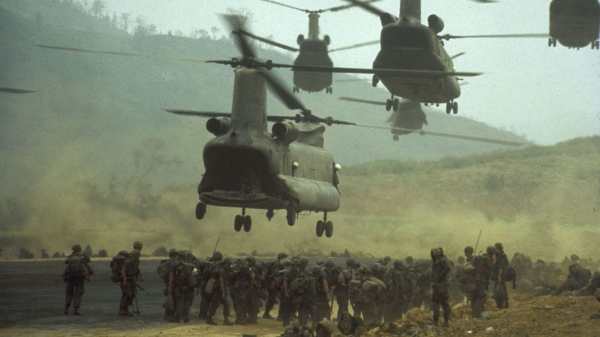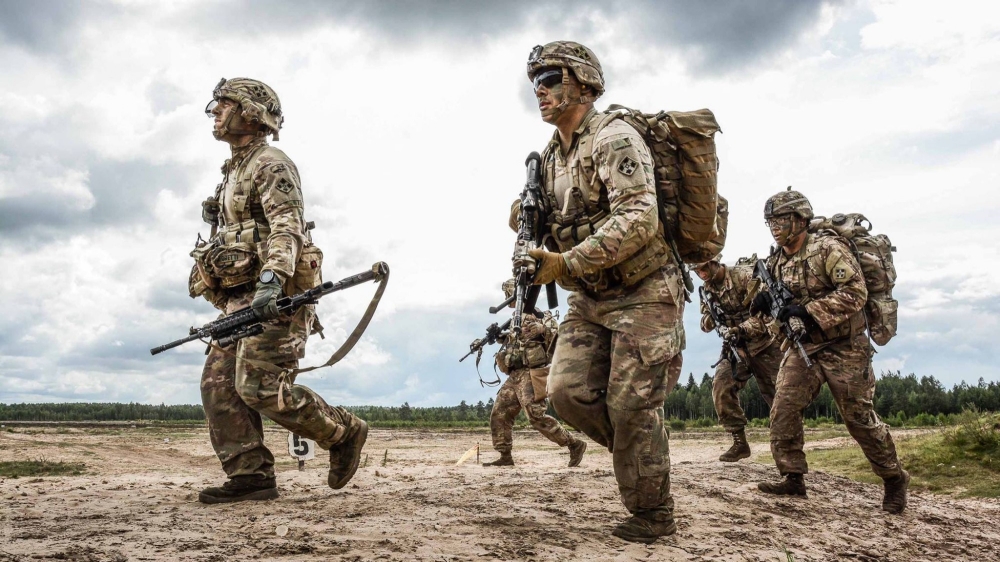In 2018, RAND published two reports for the U.S. Army describing will to fight. Arguably, will to fight is the single most important factor in war. Will to fight is the disposition and decision to fight, to keep fighting, and to win. The best technology in the world is useless without the force of will to use it and to keep using it even as casualties mount and unexpected calamities arise. Will to fight represents the indelibly human nature of warfare.
With very few exceptions, all wars and almost all battles are decided by matters of human will: Breaking the enemy's will to fight while sustaining one's own will to fight is the key to success in battle. But as focus on technology increases, the essentially human nature of war is all but ignored. Lack of focus on will to fight has created a dangerous gap in American military practice.
We must improve our understanding of will to fight.
The use of force demands that we should understand our own natures, for the most basic and the most complicated weapon system is man.
Brigadier General Shelford Bidwell, Modern Warfare: A Study of Men, Weapons and Theories — 1973
On the surface, the American military officially adopts the view of war as a contest of opposing, independent, and irreconcilable wills. But when it comes to practice — planning for and fighting wars — these theories often amount to little more than lip service. The integration of will to fight concepts into military education, training, planning, assessments, international engagement, and operations is glaringly sparse. In most cases, American and allied military professionals view war through the lens of technology and physical effects.
Gaps in Military Doctrine
In 2016 the U.S. Joint Staff identified a yawning gap in the understanding of partner and adversary will to fight:
Recent failure to translate military gains into strategic success reflects, to some extent, the Joint Force's tendency to focus primarily on affecting the material capabilities — including hardware and personnel — of adversaries and friends, rather than their will to develop and employ capabilities. . . . A failure to grasp human aspects can, and often will, result in a prolonged struggle and an inability to achieve strategic goals.
Improving understanding of will to fight might not be a panacea; war is not won by silver bullets. But if will to fight is the most important factor in war — or just a very important factor that is routinely overlooked or misunderstood — then improvement is absolutely necessary. Ignoring will to fight can contribute to tactical or even strategic defeat.

The 303rd Psychological Operations Company dropped leaflets in 2013 over Afghanistan in support of operations to defeat insurgency influence in the area.
War is a human endeavor — a fundamentally human clash of wills often fought among populations. It is not a mechanical process that can be controlled precisely, or even mostly, by machines, statistics, or laws that cover operations in carefully controlled and predictable environments. Fundamentally, all war is about changing human behavior.
U.S. Army, Army Doctrine Publication (ADP) 3-0, 2017
The Ebb and Flow of Will to Fight
There is a pattern in the wavering emphasis on will to fight in military doctrine.
A major war occurs and Western militaries slowly incorporate some aspects of will to fight into doctrine, while some aspects are completely ignored.
Gradually, the most painful lessons of war fade as combat veterans retire.
A new war erupts, painful lessons are briefly and only partly relearned, and then are again gradually forgotten.
Timeline for When Will to Fight Was Important, in Historical Context with Accompanying Military Doctorine
Will to fight is most or very important
1895: Organization and Tactics
1923: Field Service Regulations
1939 (WWII): Field Service Regulations (highest point)
1940 (WWII): Small Wars Manual
1944 (WWII): Field Service Regulations
1950s-60s: Field Manual (FM) 100-5 series
1982: Air-Land Battle
1989: Warfighting (high point)
1993 (Perisian Gulf): FM 100-5 (high point)
2016 (War on Terror): ADP 3-0 (high point)
Effectively no inclusion of will to fight
1914 (WWI): Field Service Regulations
1976-77 (Vietnam): FM 100-5
2001 (War on Terror): FM 100-5
2011-12 (War on Terror): ADPs
The U.S. Army and Marine Corps — the ground combat forces of the American military — have alternatively embraced and ignored the concept of will to fight for over a century. It has no stable, central place in doctrine or practice, and it is often defined in vague and impractical terms. The consequences of this erratic ebb and flow stand testament to the pressing need to improve and normalize the study of will to fight in American military practice and to make its lessons useful.
Will to Fight in History
Impact of Will-to-Fight Assessment and Analysis Failures
Whatever the cause — from the lack of credible assessment methods or even a widely agreed-on definition of will to fight — the military, political, economic, and social costs of a dissonance between accepted will-to-fight theory and practice have been extraordinary. The RAND reports on both the military and national will to fight offer historical cases that demonstrate the impact of will-to-fight misjudgment. A few historical examples:
Failed assessment of Arab will to fight leading up to the 1973 Yom Kippur War resulted in strategic surprise, nearly leading to Israel's defeat and pushing the United States and the Soviet Union to the brink of war.
The Central Intelligence Agency's analyses of Vietnamese will to fight — on both sides — from 1954 to 1974 were often accurate but essentially ignored by policymakers. The United States failed to break the Democratic Republic of Vietnam's (DRV's) will to fight, lost its own political will to fight, and withdrew from Vietnam having lost nearly 60,000 Americans.
Failure to understand potential vulnerabilities in the Iraqi Army's will to fight in 2011 contributed to its defeat at the hands of the Islamic State in 2014, after which the U.S. Secretary of Defense stated, "The Iraqi forces just showed no will to fight."
The chart below provides examples stretching from World War I to the present in which failure to accurately assess will to fight had serious consequences.
Conflict (Date)AssessmentRealityConsequenceWW I (1916) The French will break under fire at Verdun The French continued to fight France helped defeat Germany in 1918
WW II (1941) Germany's Operation Barbarossa will destroy the Red Army The Soviets retreated to Moscow but continued to fight The Allies defeated Nazi Germany in 1945
First Indochina War (1946–1954) The Viet Minh have a limit and will surrender The Viet Minh mobilized tens of thousands from the population to help surround the French in Dien Bien Phu The Viet Minh defeated France in 1954
Korean War (1950–1953) The United States will liberate North Korea North Korean and Chinese forces fought hard in the Third Phase Offensive at 38th Parallel Stalemate between North and South Korea
India-Pakistan War (1965) Indian soldiers will quickly retreat and reopen negotiations for Kashmir India expanded the war International actors forced a return to the pre-war status quo
Vietnam War (1965–1975) The Democratic Republic of Vietnam (North) will break in 1967 The DRV persisted The DRV won in 1975, and the United States was strategically defeated
First Chechen War (1994–1996) Russian forces will take Grozny Chechen rebels continued resistance Stalemate between Russia and Chechen rebels through 1999
Islamic State incursions (2011–2014) The Iraqi Army is ready to fight The Islamic State defeated the Iraqi Army A U.S. partner was soundly defeated; U.S. troops still deployed
Afghanistan conflict (2009–present) The Taliban can be broken by 2011 The Taliban persisted against the Afghan government U.S. forces remain in Afghanistan in 2019
Yemen Civil War (2015–present) The Yemeni government can defend Sana'a Houthi rebels defeated the Yemeni government A U.S. partner was defeated
Will-to-Fight Case Study: Vietnam War

Photo by Larry Burrows/The LIFE Picture Collection/Getty Images
The case of the Vietnam War shows that even accurate intelligence analyses of will to fight are meaningless if they are ignored by decisionmakers.
CIA-provided assessments of the Democratic Republic of Vietnam (DRV):
1970 Hanoi still considers that it has the will and basic strengths to prevail. . . . Despite Hanoi's obvious concerns with its problems, the Communists almost certainly believe that they enjoy some basic strengths and advantages which will ultimately prove to be decisive.
1974 Hanoi continues to demonstrate its determination to impose Communist control on the South. There has been no apparent curtailment in Hanoi's support for [the war]. . . . Finally, even if there is not a major offensive during the next year, it is clear that at some point Hanoi will shift back to major warfare in its effort to gain control of South Vietnam.
Despite the straightforward analytic conclusions that the DRV had a deep reservoir of will to fight, without a definition or model of will to fight the CIA assessments came across as subjective. As a result — despite persistent warning to policymakers — the United States and General William Westmoreland sought to break the will of DRV leaders through measured escalation and by inflicting casualties.
By 1968, U.S. troop levels began to plummet — from ~520,000 to only ~200 advisers by 1972 — and the DRV conquered the Republic of Vietnam (South) by 1975.

No comments:
Post a Comment